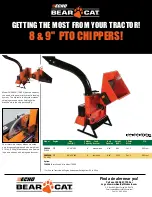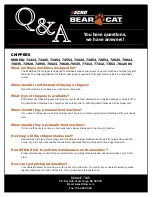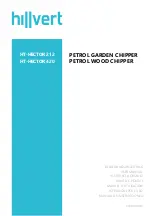
MCAC-CTSM-2018-1
Flooded type water cooled screw chiller (MIC)
95
manual book). Leak testing must be done under sufficient pressure. Charge enough refrigerant into the
system to build the pressure up to approximately 70 kPa and add sufficient dry nitrogen to bring the
pressure up to a maximum of 850 kPa. Leak test with an electronic leak detector. Water flow through the
vessels must be maintained anytime refrigerant is added or removed from the system. If any leaks are
found in welded or brazed joints, or it is necessary to replace a gasket, relieve the test pressure in the
system before proceeding. Brazing is required for copper joints. After leaks are repaired, the system
must be evacuated and dehydrated.
Evacuation
After it has been determined that there are no refrigerant leaks, the system must be evacuated using a
vacuum pump with a capacity that will reduce the vacuum to at least 130Pa (=1mmHg). A mercury
manometer, or an electronic or other type of micron gauge, must be connected at the farthest point from
the vacuum pump. For readings below 130 Pa, an electronic gauge or other micron gauge must be used.
The triple evacuation method is recommended and is particularly helpful if the vacuum pump is unable to
obtain the desired 130Pa of vacuum. The system is first evacuated to approximately 660Pa (=5mmHg).
Dry nitrogen is then added to the system to bring the pressure up to zero.
Then the system is once again evacuated to approximately 230 Pa(=2mmHg). This is repeated three
times. The first pull down will remove about 90% of the non-condensable, the second about 90% of that
remaining from the first pull down and, after the third, only 0.2% non-condensable will remain.
Check on the refrigerant charge
To verify that the unit is operating with the correct refrigerant charge, perform the following checks.
1. Run the unit at maximum operating load.
2. Check that the leaving chilled water temperature is between 6~8°C.
3. Check that the entering cooling water temperature is between 25 ~ 32°C.
4. Under the above conditions, verify the following items.
a) The sub-cooling is between 4 and 6°C
b) The difference between the leaving water temperature and evaporating temperature is 4~6°C.
c) The difference between condensing temperature and condenser leaving water temperature to is
0.2~3°C.
e) The evaporator refrigerant level slightly laps the last tubes row by checking the sight glass installed on
each evaporator for a visual inspection.
f) The condenser refrigerant level is included between the condensing and the sub-cooling sections by
checking the sight glass installed on each condenser for a visual inspection.
5. Verify the sight glass on the liquid piping is fully charged. If one of the above parameters exceeds the
limits, the unit may require an additional refrigerant charge.
Note: Refrigerant removal and draining must be performed by qualified personnel using the correct tools.
Inappropriate maintenance could lead to refrigerant or pressure loss. Do not discharge the refrigerant or
the lubricant oil into the environment. Always use a proper recovery system.
Refer to Physical Data tables supplied in the IOM manual book). Immediately in front of the orifice baffle
(see Fig.) is a factory-installed liquid line service angle valve. Each angle valve has a1 5/8-in. threaded
connection for charging liquid refrigerant. Connect the refrigerant drum to the gauge port on the liquid
line shutoff valve and purge the charging line between the refrigerant cylinder and the valve. Then open
















































